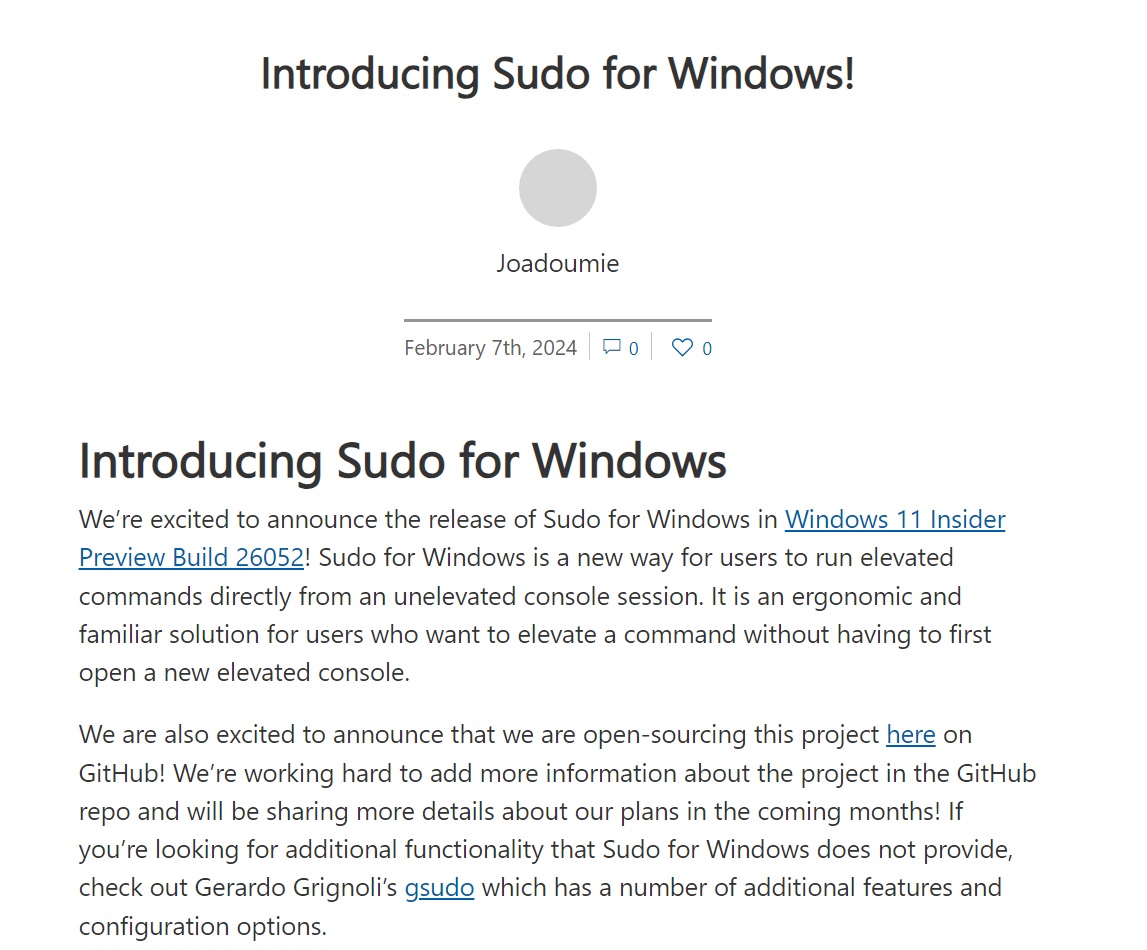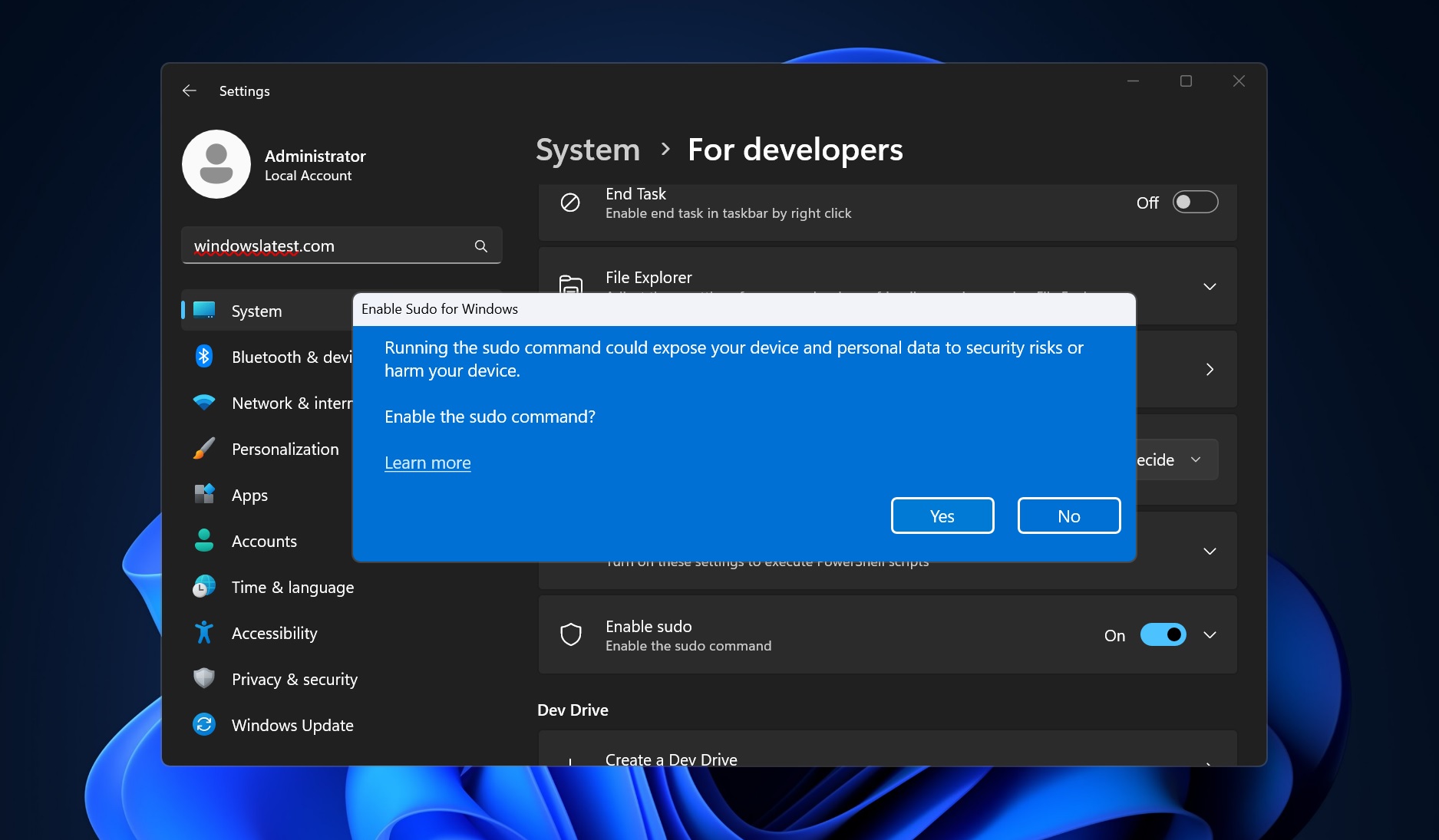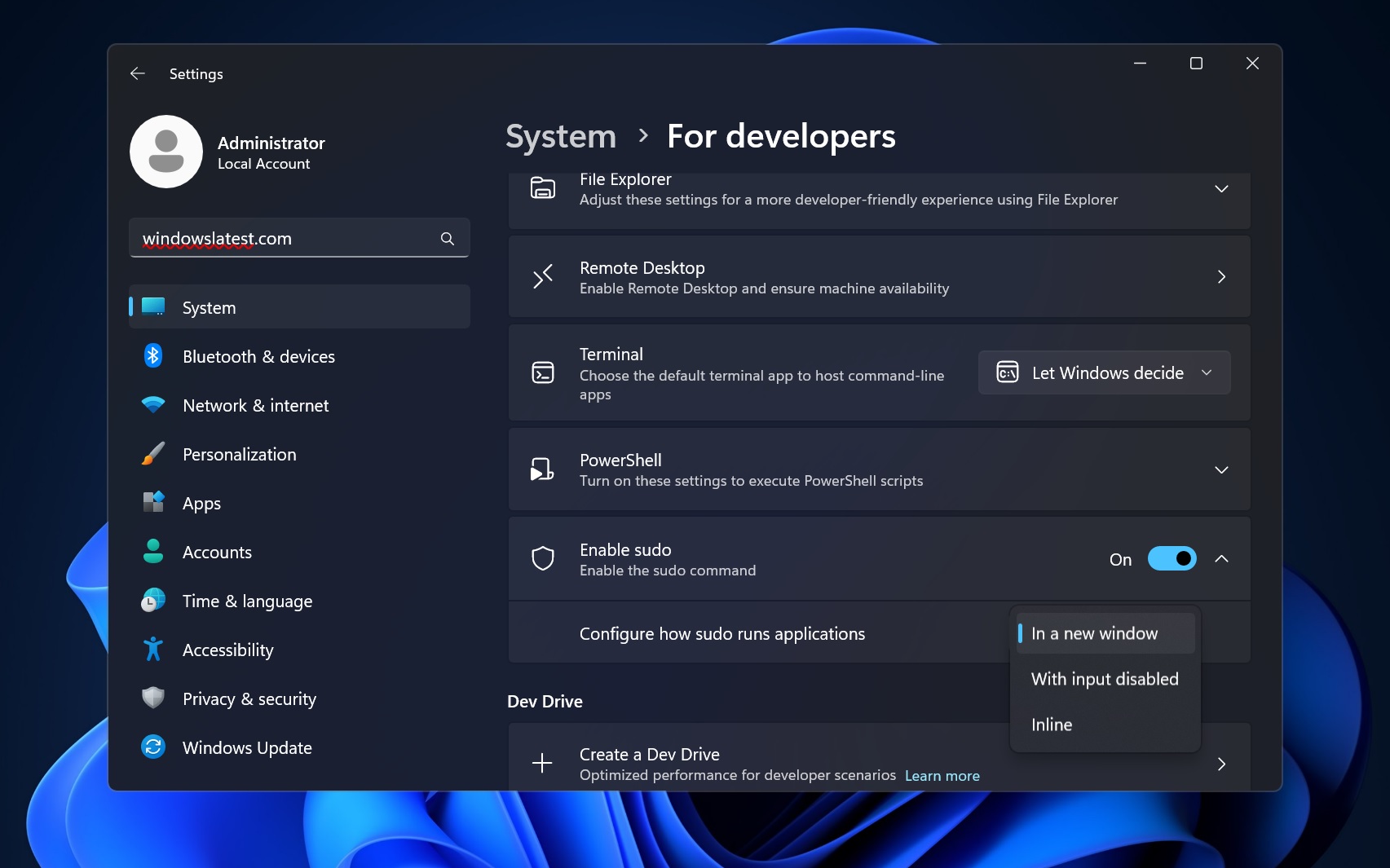Windows 11 Build 26052, which will most likely be available for download on Thursday or later this week, includes the first public preview of “Sudo for Windows”.
In a now-deleted blog post, which was first spotted and cached by Windows Latest, Microsoft confirmed Sudo for Windows is a new way to “elevated commands directly from an unelevated console session”, and it has plans to make the feature open-source on GitHub.
Microsoft describes Sudo for Windows as “an ergonomic and familiar solution for users who want to elevate a command without having to first open a new elevated console”. Sudo for Windows is in the early stages of development, and it was recently spotted in a leaked Windows Server 2025 build.

In a deleted blog post, Microsoft notes that Sudo can be enabled from Settings > For Developers page, and toggle on the “Enable Sudo” option.

You can also enable Sudo for Windows by running the following command in an elevated console session:
sudo config --enable <configuration_option>
As we previously reported, Sudo for Windows currently supports three different configuration options:
- In a new window (newWindow): In this configuration, Sudo for Windows will open a new elevated console window and run the command in that window. This is the default configuration option when sudo is enabled. For example, if you run:
sudo netstat -abA new window will open and the command will be run in that window - Input closed (disableInput): In this configuration, Sudo for Windows will run the elevated process in the current window, but the new process will be spawned with its stdinput closed. This means that the new process will not accept any user input, so this configuration will not work for processes that require further user input after elevation.
- Inline (normal): This configuration is most similar to the behavior of sudo on other operating systems. In this configuration, Sudo for Windows will run the elevated process with its stdinput, stdoutput, and stderror all connected to the current window. This means the new elevated process can take in input and route output to the current window.
Microsoft explains how Sudo for Windows works
When you run a process from the command-line with sudo, a UAC dialog will appear, asking the user to confirm the elevation. And you’ll be able to use sudo in the terminal like you do on Linux or macOS.

In a New Window
In this configuration, sudo.exe will launch a new elevated console window and run the command in that window. The new window will be launched with the same working directory as the current window.
The new window will also be launched with the same environment variables as the current window. This configuration has a similar flow to the runas command.
Input Closed and Inline
In these configurations, sudo.exe will launch a new elevated process, an elevated sudo.exe process, and the original unelevated sudo.exe will establish an RPC connection with the new elevated process.
In other words, information is passed from the unelevated sudo instance to the elevated one. Specifically, the console handles from the unelevated process are passed to the elevated process which allows the elevated process to read input from the unelevated process and write output to the unelevated process.
However, when sudo is configured in the “Input Closed” configuration, the elevated process will essentially not be passed the console’s input handle, so it will not be able to read input from the user.
It is important when running sudo in the “Inline” or “Input Closed” configurations to be aware of the security implications. It is possible that a medium integrity process can drive the elevated process. This risk is mitigated in the “Input Closed” configuration because the elevated process will not be able to read input from the user.
Microsoft noted that it will also be publishing documentation for Sudo for Windows and will be sharing more details about the security implications of running sudo in the “Inline” configuration.
“Our team is working on open-sourcing Sudo for Windows, and we’re excited to share more details about our plans in the coming months,” the company noted in a now-deleted blog post.
The post Microsoft confirms Sudo is coming to Windows 11 with Build 26052 appeared first on Windows Latest
